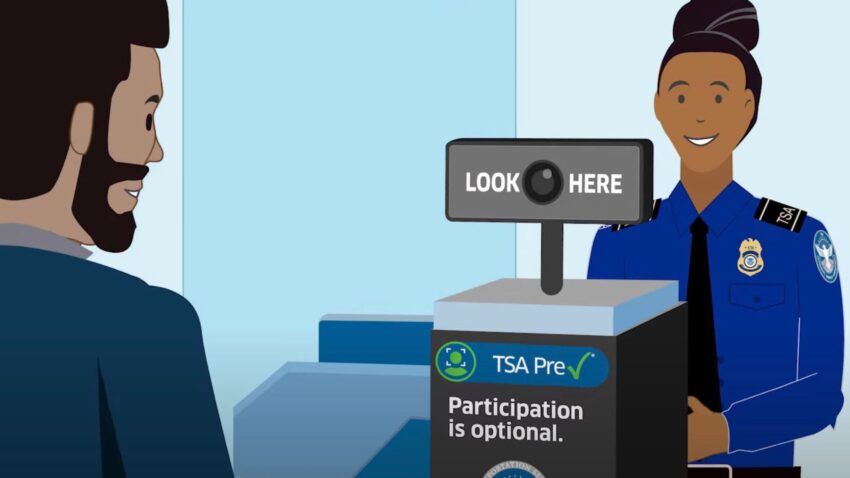If you’re tired of censorship and dystopian threats against civil liberties, subscribe to Reclaim The Net.
American Airlines has begun using facial recognition to verify passenger identities at airport security, further embedding biometric technology into the air travel experience. The airline’s new Touchless ID program, now live at several major airports, allows select travelers to move through TSA PreCheck without showing ID or boarding passes.
As of May 29, travelers passing through Ronald Reagan Washington National, LaGuardia, Hartsfield-Jackson Atlanta, and Salt Lake City International can now confirm who they are simply by standing in front of a camera. That image is instantly compared against official federal photo databases such as passports or Global Entry records. If there’s a match, the traveler proceeds; no physical documents required.
This identity-verification option is available only to American Airlines AAdvantage members who are 18 or older, have a valid passport, and have an active TSA PreCheck membership with a Known Traveler Number. Users can enroll through the airline’s website or app, and participation lasts for a year, with the freedom to opt-out and revert to standard ID screening at any time.
The integration of facial recognition at TSA checkpoints may seem like a convenience upgrade, but it introduces concrete privacy risks that go far beyond the airport.
American Airlines claims the system follows DHS policies and the Privacy Act of 1974, yet the specifics of how long facial data is retained, whether it is processed by third parties, or how it might be shared within government agencies remain opaque.
There is also no independent oversight mechanism to audit how this data is handled once it enters the system. Given past incidents involving biometric data leaks, such as the 2019 CBP breach that exposed traveler photos, assurances from within the system are not enough.
This program also sets a precedent that could quietly shift the baseline of what is considered acceptable surveillance. Once travelers get used to walking through security without ever pulling out a wallet, it becomes easier for facial recognition to expand into other parts of the travel experience: boarding gates, airport lounges, and even retail kiosks.
And while American says participation is voluntary, the pressure to opt in grows as more airports adopt these systems and manual ID checks become the slower and less desirable option. The path from optional convenience to expected default is short and often comes without meaningful public debate.
If you’re tired of censorship and dystopian threats against civil liberties, subscribe to Reclaim The Net.
The post Biometric Surveillance Expands: American Airlines Rolls Out Facial Recognition at Four Major Airports appeared first on Reclaim The Net.
Click this link for the original source of this article.
Author: Ken Macon
This content is courtesy of, and owned and copyrighted by, https://reclaimthenet.org and its author. This content is made available by use of the public RSS feed offered by the host site and is used for educational purposes only. If you are the author or represent the host site and would like this content removed now and in the future, please contact USSANews.com using the email address in the Contact page found in the website menu.





